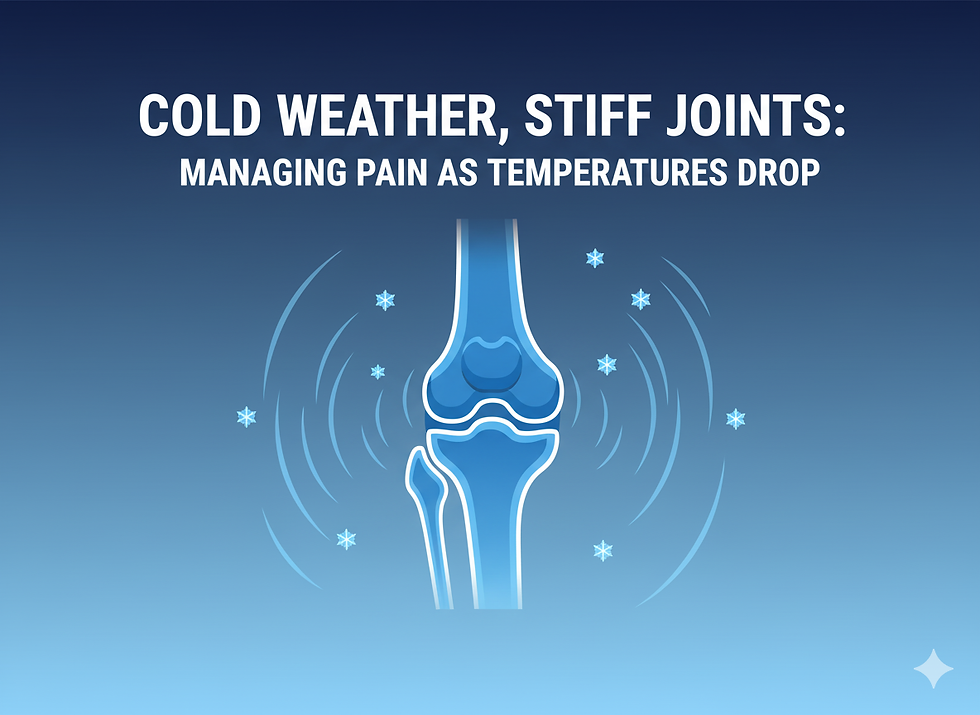A Step in the Right Direction
- K-Town Physio

- Jul 20, 2023
- 3 min read
Updated: Jan 18, 2024
Choosing the right shoe for your activities could have a positive outcome on foot health and reduce the risk of injury. Having muscle imbalances in the foot can lead to improper gait patterns or poor posture, and ultimately could lead to injury.
Traditionally, shoes have been made to stabilize and support the foot. However, this may overprotect the foot and can lead to weakness in the smaller intrinsic muscles, as they are not working as hard. This leads to muscle imbalances potentially causing injury to the feet, lower limbs, and back.
A type of shoe gaining popularity recently is the minimalist shoe. It offers greater sensory contact with the ground allowing natural foot movements while providing protection from outdoor elements. Minimalist shoes are known for being flexible, lightweight, and having a low heel-to-toe drop. These characteristics could lead to increased strength and volume in the intrinsic muscles of the foot. However, available evidence is limited to the likelihood of injury reduction.
It is common to transition between shoes, such as going from winter boots to summer sandals, basketball shoes to soccer cleats, or a traditional shoe to a minimalist shoe. However, if you transition too quickly this can increase the risk of injury. To minimize risk, you should gradually increase your time when using a new shoe. Start with 30 minutes a day, and allow time for your body to make new adaptations. If you remain injury-free and feel comfortable in your newfound footwear, you can increase the time in the new shoe.
Sometimes you will fall in love with a pair of shoes and never want to get rid of them.
Unfortunately, shoes have a life span. A general rule of thumb is to replace regularly worn shoes every year or approximately after 600 km of use. You can also look at the bottom of your shoes for answers - excessive wear may mean it's time to get a new pair. Paying attention to the wear may also give insight into muscle imbalances in the foot as it shows where the foot is delivering most of its pressure.
At K-Town Physiotherapy there are services offered to fit orthotics. With gait analysis and foot assessment, a custom orthotic can be created to help support the improper movement of the foot. Pairing exercises with orthotics can help with foot function and reduce the risk of injury.
Below are exercises to aid with ankle mobility and foot strengthening:
Ankle Range of motion on Balance Board:
Stand on round balance board.
Turn the board in each direction to mobilize ankles.

*Hold a stable object if needed for balance
Inversion with Band:
Sit and attach band to secure object and the base of your foot.
With your heel down, move the sole of your foot away from the band towards the body.
Create a “scoop” pattern lead by your pinky toe.
Return to start slowly and repeat.

Eversion with Band:
Sit and attach band to secure object and the base of your foot.
With your heel down, move your foot away from the body with resistance from the band.
Create a “check” pattern lead by your big toe.
Return to start slowly and repeat.

Heel Raise with Ball:
Squeeze a ball between your ankles.
Lift heels off the ground and continue squeezing the ball.
Lower heels and repeat

*Hold a stable object if needed for balance
Dorsiflexion with Band:
Place band around foot and secure to anchor point.
Place ankle on towel to keep your foot off the ground.
Pull your foot towards you.
Return to start slowly and repeat.

Prone Hamstring Curl with Band:
Attach band to ankle and secure object.
Lie of your stomach with knees straight.
Bend knee with resistance band towards your body.
* Avoid using your hips during the movement.
Return to start slowly and repeat.

Article by: Maverick Brown University of Guelph-Humber Kinesiology placement student: If you have any questions or concerns your feet, you can contact K-TOWN Physiotherapy. They’ll complete an assessment and provide information and treatment on the best course of action to treat problems that may arise.
References:
Chen, T. L.-W., Sze, L. K. Y., Davis, I. S., & Cheung, R. T. H. (2016). Effects of training in minimalist shoes on the intrinsic and extrinsic foot muscle volume. Clinical Biomechanics, 36, 8–13. https://doi.org/10.1016/j.clinbiomech.2016.05.010
Dombroski, Dr. C. (2022, December 20). When to replace worn out footwear. SoleScience. https://www.solescience.ca/how-worn-is-worn-out/#:~:text=As%20a%20general%20rule%20of,will%20wear%20out%20more%20quickly.
Fuller, J. T., Thewlis, D., Tsiros, M. D., Brown, N. A. T., Hamill, J., & Buckley, J. D. (2018). Longer-term effects of minimalist shoes on running performance, strength and bone density: A 20-week follow-up study. European Journal of Sport Science, 19(3), 402–412. https://doi.org/10.1080/17461391.2018.1505958
How to transition to minimalist shoes. Natural Footgear. https://naturalfootgear.com/blogs/educational-articles/how-to-transition-to-minimalist-shoes
Katja. (2023, March 8). How to safely transition to Barefoot Shoes: A guide for newbies. Barefoot Universe. https://barefootuniverse.com/transition-to-barefoot-shoes-barefoot-shoes-for-beginners/#:~:text=Always%20start%20slowly%20when%20changing,in%20barefoot%20shoes%20each%20day.
Rixe, J. A., Gallo, R. A., & Silvis, M. L. (2012). The barefoot debate. Current Sports Medicine Reports, 11(3), 160–165. https://doi.org/10.1249/jsr.0b013e31825640a6
Images retrieved from Physiotec.



